|
TennisOne Lessons Where is ‘Out in front?’ Dave Smith TennisOne Senior Editor Since the first tennis lesson was given, somewhere back in the dark ages, Tennis Pros around the world have been using the prosaic maxim, ‘hit the ball out in front.’ I don't doubt the efficacy of this simple phrase, but it does beg the question, Where exactly is out in front? While the gist of this phrase is generally accepted to mean, ‘don’t hit late,’ the common interpretation is to hit the ball more forward, as in towards the net, relative to the player’s position.
For many shots, this interpretation is accurate, but for other shots, it can be the root of many problems and can lead to ineffective grips, footwork, and swing patterns. Thus, it is important to understand the different conceptual adaptations of this phrase so as to avoid such common faults. Groundstrokes The more severe the grip on forehands and backhands, the more the contact point must be moved farther out in front of the player. Semi and full western grips on the forehand require contact to be nearly a foot out in front of the player towards the target. Likewise, a strong, eastern backhand grip will move the contact point on a groundstroke nearly equal-distance out in front of the body. Because such grips naturally lay the racquet back more severely, (then eastern forehand or continental grips for the forehand or continental grip on the backhand), the player must move the perceived contact zone further forward so the racquet head can catch up to the hand without the player using the wrist to accomplish this. If contact is further back, the player will end up being late (specially on the backhand side) and late contact can lead to severe tennis elbow.
Exaggerating this forward contact zone can increase the crosscourt effect because the racquet head can brush up the outside of the ball causing topspin as well as inward spin. Inward spin causes the ball to curve for a effective more crosscourt shot. This action is very helpful for pulling an opponent further off the court or for a more effective passing shot because the ball can dip more significantly as well as curve away from the middle of the court. Volleys It is on volleys that the phrase, ‘out in front’ can be very misleading. Before I get into this discussion, I must clarify different volley philosophies.
Eastern Grip Volleys For those who learned the more rudimentary volley technique of changing grips (between eastern forehand and backhand grips for the same volleys), the contact zone and subsequent body position and swing path is generally different from that of the more advanced volley technique of using a continental grip for both the forehand and backhand volleys. And, while there are some exceptions to using the continental grip for some volleys, my experience has shown that those who learn with the eastern grips tend to have more difficulty making the transition to more advanced net play. There are a host of changes a player must employ between the two volley strategies that makes the necessary change frustrating and, for many, impossible. Eastern volleys do require contact farther out in front of the body with the arm more forward. This is because the eastern grips tend to set the racquet head back behind the hitting hand and force the player to swing more forward. In order to minimize this action, many players are forced to ‘push’ the racquet forward, usually extending the arm from a bent elbow position to a straight elbow in the process. This ‘shot-put’ technique is not only very inefficient, it severely limits the player’s ability to hit angle volleys and makes it more difficult to handle harder, lower balls that have a lot of spin. Pushing the racquet flat also limits the players’ ability to hit with underspin, a skill that is critical to hitting especially low balls with firmness. Flat volleys tend to create ‘net dinkers’ since hitting the ball flat is subject only to hitting the ball hard enough and high enough to clear the net, yet, soft enough that gravity can still bring the ball down inside the baseline. Hitting with underspin allows a player to hit with a firm stroke, with a trajectory that is high enough to clear the net, yet, because of the underspin, the ball’s velocity is much less than a ball struck with the same force flat.
Continental grip volleys Once a player understands the value and potential of the continental grip for volleys, a different set of stroke fundamentals come into play. For the most part, using the continental grip sets the racquet parallel with the forearm. This is especially true on backhand volleys. This causes the orientation of the contact point to be out to the side of the player, usually just off the front knee or foot. Thus, ‘out in front’ refers NOT towards the net or target, but perpendicular to the target line. Yet, contact is still ‘out in front’ of the player in reference to their position when they turn sideways to accept the volley. I like to remind players that with the volley, out in front means in front of their chest or sternum. Arm and shoulder positions On forehand volleys, as a player turns, the hitting arm and shoulder are on the back side of the player. This creates a need to press the hitting hand forward somewhat so-as to not hit the ball late off the back foot or hip. This is where I, along with many of my fellow teaching pros, teach to ‘hit the ball more out in front’ of the student. I use a handcuffed analogy to get this point across. By hitting forehand volleys with the wrists close together, (as if handcuffed), the player almost automatically limits the back swing and makes contact more out in front. Because of this shoulder position, a player does not need to turn as much sideways to hit an effective volley. However, when players are learning to volley, I like to emphasize a bit more shoulder turn to help the player learn to hit volleys with better form. Later, most all players will turn as needed without paying any more attention to this aspect. On backhand volleys, the hitting arm and shoulder are the front portions of the player’s body when they have made their turn. Thus, the hitting arm does not need to press forward to make contact. (Unless, of course, the player takes their arm back during the turn, in which case the racquet will indeed end up well behind the player’s front body plane.) Watch the majority of skilled players and pros hit backhand volleys and you will find that they seldom reach far forward to make contact.
Players who use eastern grips must reach forward to make contact square with the desired trajectory. Yet, these players create limitations on available pace, spin, angle, and control in using such form. This explains why 95% of tennis books and instructors advocate players switching to the continental grip in order to reach more advanced levels of play. I have alluded to this in several articles as well. But, remember this, the most difficult thing for any aspiring tennis student to do is to change their grip—and subsequent swing pattern—once they have become comfortable and confident with a more rudimentary grip and/or technique. The Issue of Potential Pace When a player reaches forward towards the net to strike a volley, they tend to have very little available action to strike the ball with any firmness or punch. When you reach far forward to make contact with the ball, and you have not yet hit the ball prior to full extension, you will have very little leverage left to literally hit the ball. While many pros suggest the volley is a block, in reality, it is seldom a true block. The idea of shortening the stroke for control encourages the concept of a ‘block’, yet, at higher levels of play, most volleys are a short, linear drive with underspin. Angle volleys are achieved by setting the desired angle of the racquet to the target and hitting with slight underspin as well. Another problem I see with many players who use eastern grips on the volley is the inability to hit soft, angle volleys. This is because, as I mentioned earlier, the eastern grip tends to lay the racquet head back more. Thus, a player who, for example, wants to hit a sharp crosscourt forehand with an eastern forehand grip will have to literally swing forward and around to simply get the racquet face at the proper angle. It is very difficult to slow this swing down right at contact so-as not to over hit the ball.
Conclusion Skilled volleys are hit in front of the player but, in front means more towards the sideline. Beginners and players using eastern grips on the volley tend to reach forward with their hand to make contact. This limits the potential touch, angle, and pace available to the player. Rather than reaching for the ball, think of ‘reaching with your feet’ instead of reaching for the ball with your hand. John McEnroe was a master of this movement. He seldom was caught reaching for balls. You can improve your volley by taking a cue from the pros. Become comfortable with the continental grip, and learn to volley using proper form. On groundstrokes, hit the ball more forward and in a consistent contact zone. Your comments are welcome. Let us know what you think about Dave Smith's article by emailing us here at TennisOne .
TENNIS MASTERYFinally. a resource that unlocks these mysteries: • Why do m • Why are making changes in one's game so frustratingly difficult? • What tennis teaching methods are disruptive or detrimental to player progression? Read David W. Smith's TENNIS MASTERY and learn not just how to avoid playing at mediocre levels, but how the best players in the world Master the sport of tennis! "With a depth of knowledge and fresh perspective, TENNIS MASTERY is set to become a manual for tennis instructors and a measure for tennis literature." Richard Wigley, Director, Kayenta Tennis Center , Ivins Utah . Take in David Smith's 30 plus years in the tennis teaching industry. This 335-page manual will provide for every level of player as well as support for all tennis-teaching professionals, a blueprint for reaching higher levels of tennis mastery. Order TENNIS MASTERY at tenniswarehouse.com , or go to tennismastery.net for exciting excerpts from the book and a host of tennis information! And check out David Smith's other articles found here at TennisONE.com David has taught over 3000 players including many top national and world ranked players. He can be reached at acrpres1@email.msn.com. |

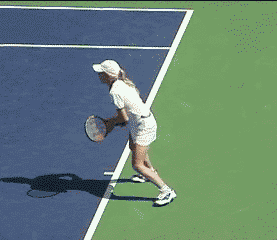
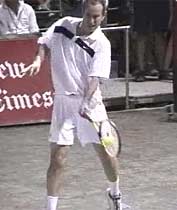
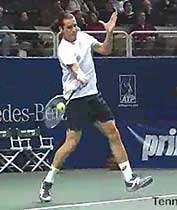

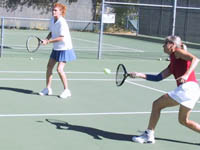
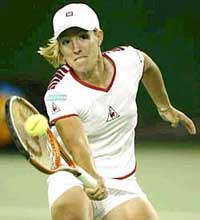
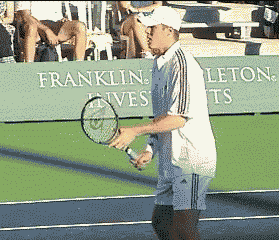
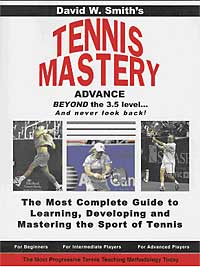 illions of tennis players stagnate at levels far below their potential?
illions of tennis players stagnate at levels far below their potential? 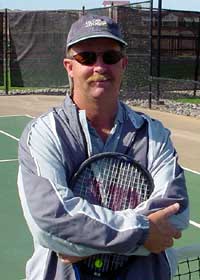 Your comments are welcome. Let us know what you think about this article by
Your comments are welcome. Let us know what you think about this article by